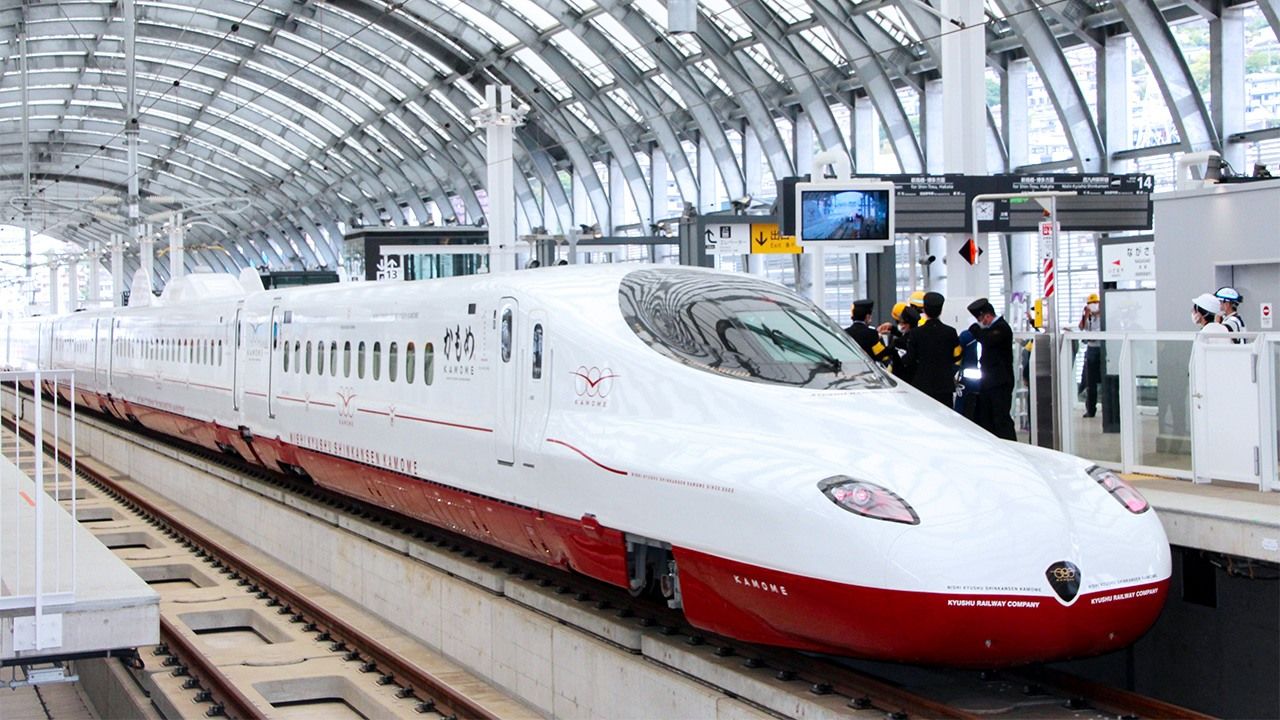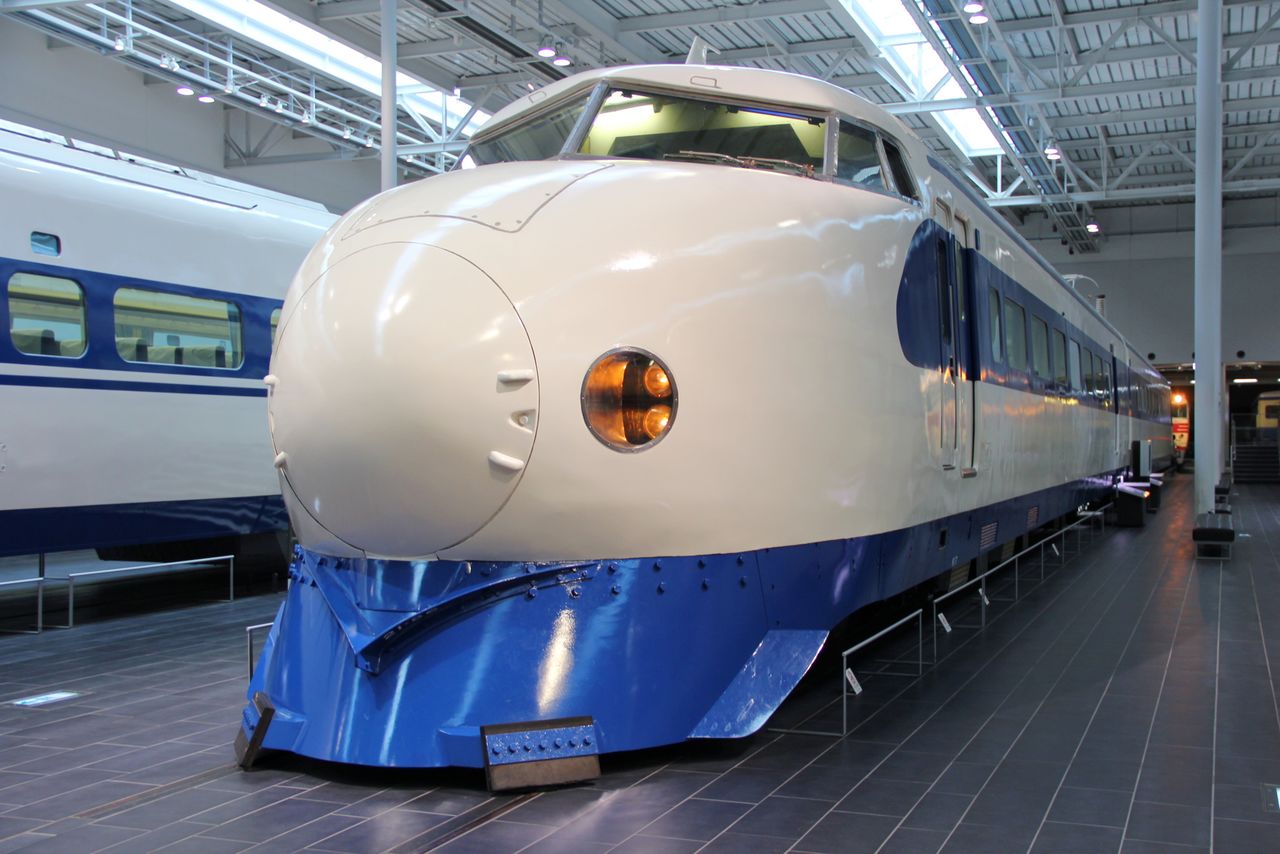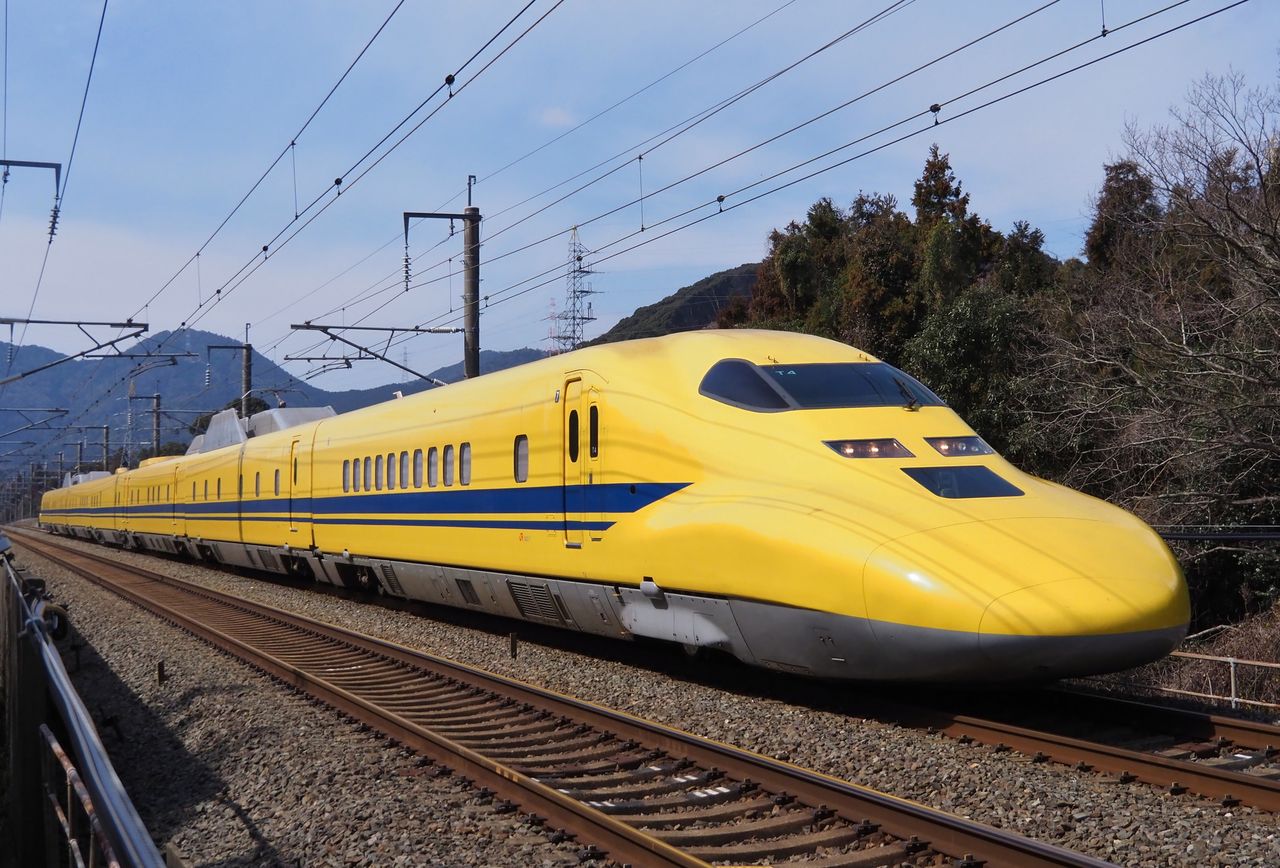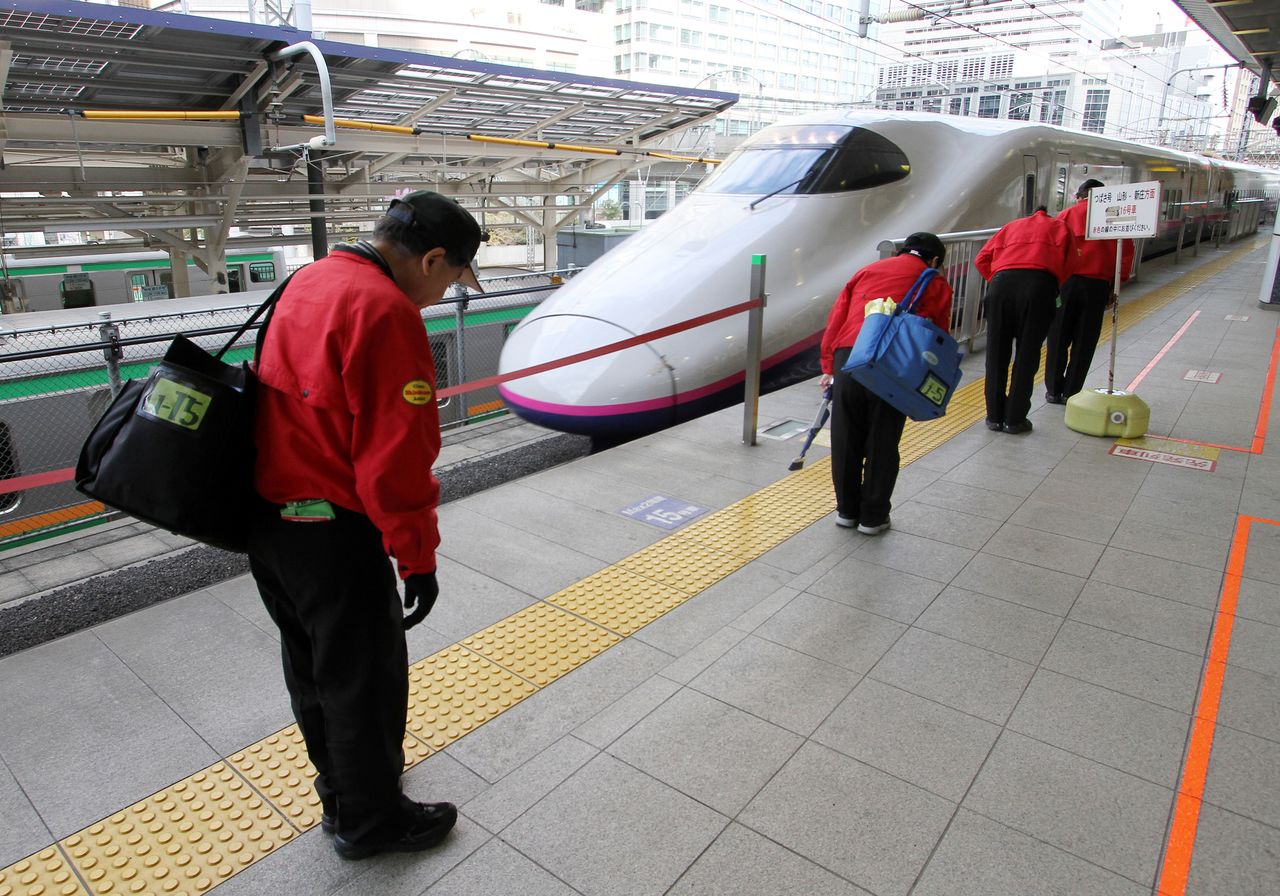
The Shinkansen: Japan’s Bullet Train
Travel TechnologyFrom Kyūshū to Hokkaidō
The Shinkansen, or “bullet train,” is a Japanese icon. The first route was the Tōkaidō Shinkansen from Tokyo to Osaka, completed ahead of the 1964 Tokyo Olympics, and named after the highway that linked east and west Japan in the Edo period (1603–1868). Its trains were the first in the world to achieve a speed of 200 kilometers per hour and became a symbol of Japan’s postwar recovery and subsequent economic miracle. In 1972, the San’yō Shinkansen linked Osaka to Okayama, and this line was further extended in 1975 as far as Hakata in Kyūshū’s Fukuoka Prefecture.

The original 0 series Shinkansen trainset, which ran on the Tōkaidō and San’yō Shinkansen lines. (© Pixta)
Next, the network expanded north and northwest from the Tokyo area, with two lines opening from Ōmiya in Saitama Prefecture in 1982. The Tōhoku Shinkansen went to Morioka in Iwate Prefecture, while the Jōetsu Shinkansen connected with Niigata in the prefecture of the same name. However, Japan National Railways, which developed the Shinkansen, ran into financial difficulties and was privatized and split into multiple companies in 1987. The Shinkansen network would be run by its successor, known collectively as the Japan Railways Group.
Around this time, it was impossible to fund construction of new Shinkansen routes. Instead, JR devised the “mini-Shinkansen,” whereby existing lines were upgraded to the same track width as Shinkansen lines. Based on this method, the Yamagata Shinkansen began operations in 1992 and the Akita Shinkansen in 1997. The maximum speed on these routes is only 130 kilometers per hour, but they are directly connected with the Tōhoku Shinkansen.
Later, new Shinkansen lines were built by a special government body (now an independent administrative agency) and leased to JR. The Hokuriku Shinkansen line from Takasaki in Gunma Prefecture to Nagano was constructed using this method, opening in 1997 in preparation for the following year’s Nagano Winter Olympics. This was a full-spec route, not a mini-Shinkansen, allowing maximum speeds of 260 kilometers per hour.
A series of new full-spec lines and extensions followed. The Tōhoku Shinkansen expanded northward to Hachinohe and Aomori in Aomori Prefecture in 2003 and 2010, respectively. A new Kyūshū Shinkansen line linked Kumamoto to Kagoshima in 2004 before a route between Hakata and Kumamoto began operations in 2011. In 2015, the Hokuriku Shinkansen extended to Kanazawa in Ishikawa Prefecture, while the Hokkaidō Shinkansen made its debut the following year with a line from Aomori to Hakodate. This meant that the Shinkansen network now stretched from Kyūshū to Hokkaidō.
The latest section is the Nishi-Kyūshū Shinkansen, opening between Takeo in Saga Prefecture and Nagasaki in September 2022. The Hokuriku Shinkansen is scheduled to link up Kanazawa with Tsuruga in Fukui Prefecture in 2024, and under current plans, the Hokkaidō Shinkansen will connect Hakodate to Sapporo in 2031.
Rising Speeds
When the Tōkaidō Shinkansen began running in 1964, it had a maximum speed of 210 kilometers per hour, with the Hikari service linking Tokyo and Osaka in 3 hours and 10 minutes. By 1986, an increased speed of 220 kilometers per hour cut the journey time to 3 hours. This was soon eclipsed in 1992 with speeds of 270 kilometers per hours on the new Nozomi service, bringing the journey down to 2 hours 30 minutes. In 2015, the top speed rose to 285 kilometers per hour and the total time shortened to just 2 hours and 22 minutes.
Meanwhile, the Tōhoku Shinkansen was launched in 1982 with a maximum speed of 210 kilometers per hour. This rose to 240 in 1985, 275 in 1992, and 300 kilometers per hour in 2011. Since 2013, it has had a top speed of 320 kilometers per hour, which is the fastest among any Shinkansen service.
The Rail Doctor
As well as its speed, the Shinkansen is known for its packed schedules. The Tōkaidō Shinkansen has more than 340 services on average each day, with trains running every three minutes during peak hours. The Tōhoku, Jōetsu, Hokuriku, and Hokkaidō Shinkansen networks also have a total of more than 320 services each day.
Given this heavy traffic, there are special trains to ensure the safety of tracks and equipment. The test trains that run on the Tōkaidō and San’yō Shinkansen lines are popularly known as Doctor Yellow for their brightly colored appearance. As a “doctor” diagnosing any issues with the rail network, a test train runs between Tokyo and Hakata once every 10 days, at a maximum speed of 270 kilometers per hour, inspecting overhead wires, signals, tracks, and other equipment. Their relative rarity has won them a reputation of bestowing good fortune on those who see them.

Doctor Yellow on the job. (© Pixta)
Cleaning as Theater
Besides speed and safety, operators also aim to provide a high level of service. One example comes with the cleaning of train cars at stations.
When a JR East Shinkansen service arrives in Tokyo, the turnaround time is around 12 minutes. It takes 2 minutes for passengers to disembark and 3 for the next travelers to get on board, leaving just 7 for cleaning, but the quality of work is exceptional during this brief period. One cleaning team has 22 members. They line up on the platform before the train arrives and greet passengers with a deep bow. Typically, two staff members per car collect garbage from around 100 seats, turn the seats around manually, wipe all tables and window frames, and change seat covers as necessary. Once the cleaning is over, the team lines up on the platform and bows again. This “Shinkansen theater” may even earn a round of applause from passengers.

Cleaning staff bow to passengers after a Shinkansen train arrives at Tokyo Station. (© Pixta)
The Next Generation
The evolution of the Shinkansen continues today. JR Central began construction of the linear Shinkansen in 2015, which will use maglev technology to achieve speeds of 500 kilometers per hour, connecting Shinagawa in Tokyo with Nagoya in as little as 40 minutes. However, concerns over how tunneling for the route will affect water resources in Shizuoka Prefecture have led to delays, meaning it is unlikely to begin operations in 2027, as originally planned.
Meanwhile, JR East is developing its next-generation Alfa X train with the aim of increasing speeds on the Tōhoku and Hokkaidō Shinkansen. It is targeting commercial operations at 360 kilometers per hour, which would be the world’s fastest for a non-maglev train, and aims to introduce the vehicle by the time the Hokkaidō Shinkansen is extended to Sapporo in 2031. The company is also testing an automated Shinkansen on the Jōetsu line, which it intends to put into practical operation at some point in the future.
(Translated from Japanese. Banner photo: A Shinkansen train at Nagasaki Station during testing of the Nishi-Kyūshū Shinkansen on May 10, 2022. © Jiji.)
NIPPON


No comments:
Post a Comment